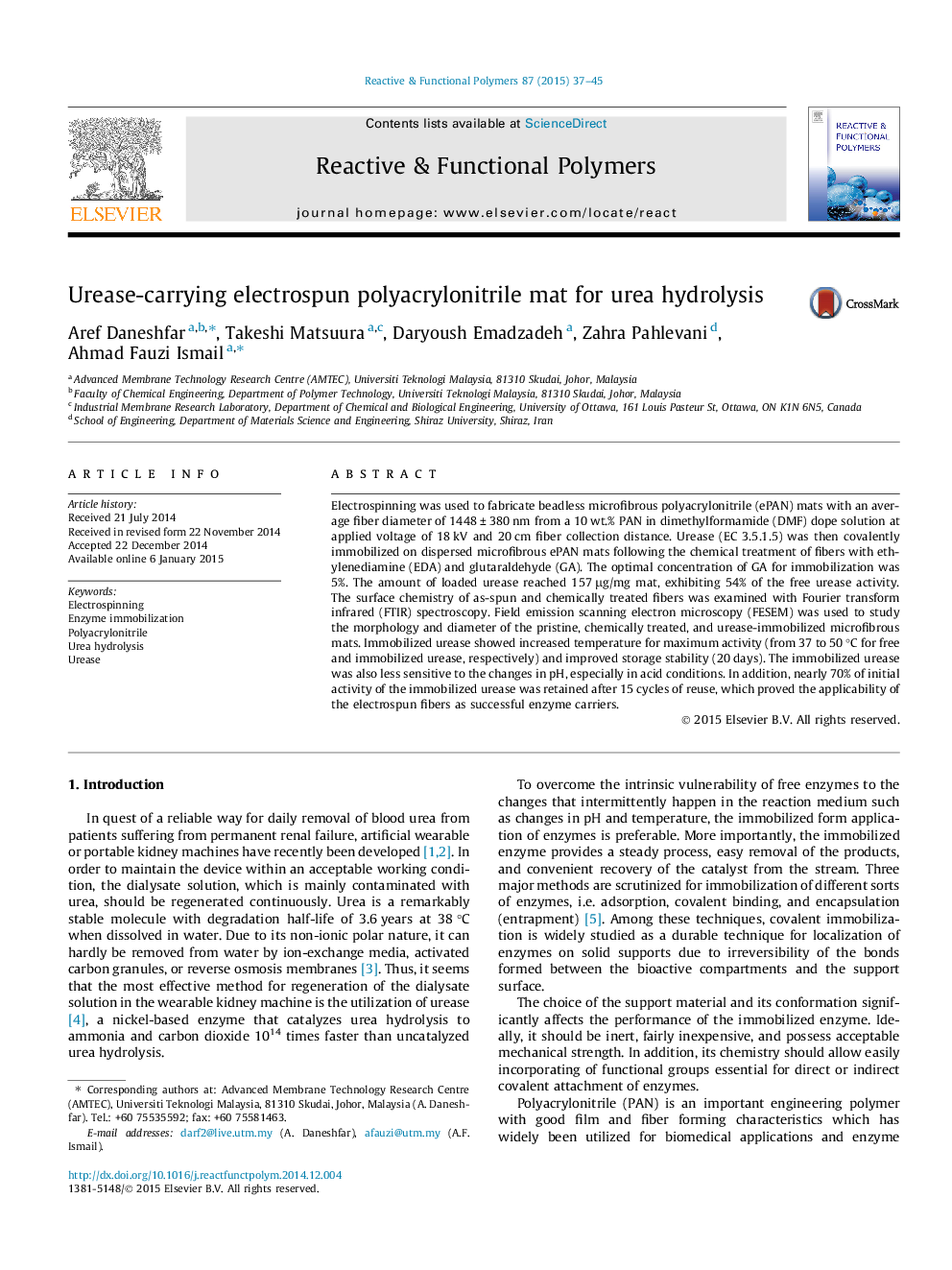| Article ID | Journal | Published Year | Pages | File Type |
|---|---|---|---|---|
| 5209827 | Reactive and Functional Polymers | 2015 | 9 Pages |
Abstract
Electrospinning was used to fabricate beadless microfibrous polyacrylonitrile (ePAN) mats with an average fiber diameter of 1448 ± 380 nm from a 10 wt.% PAN in dimethylformamide (DMF) dope solution at applied voltage of 18 kV and 20 cm fiber collection distance. Urease (EC 3.5.1.5) was then covalently immobilized on dispersed microfibrous ePAN mats following the chemical treatment of fibers with ethylenediamine (EDA) and glutaraldehyde (GA). The optimal concentration of GA for immobilization was 5%. The amount of loaded urease reached 157 μg/mg mat, exhibiting 54% of the free urease activity. The surface chemistry of as-spun and chemically treated fibers was examined with Fourier transform infrared (FTIR) spectroscopy. Field emission scanning electron microscopy (FESEM) was used to study the morphology and diameter of the pristine, chemically treated, and urease-immobilized microfibrous mats. Immobilized urease showed increased temperature for maximum activity (from 37 to 50 °C for free and immobilized urease, respectively) and improved storage stability (20 days). The immobilized urease was also less sensitive to the changes in pH, especially in acid conditions. In addition, nearly 70% of initial activity of the immobilized urease was retained after 15 cycles of reuse, which proved the applicability of the electrospun fibers as successful enzyme carriers.
Related Topics
Physical Sciences and Engineering
Chemistry
Organic Chemistry
Authors
Aref Daneshfar, Takeshi Matsuura, Daryoush Emadzadeh, Zahra Pahlevani, Ahmad Fauzi Ismail,
